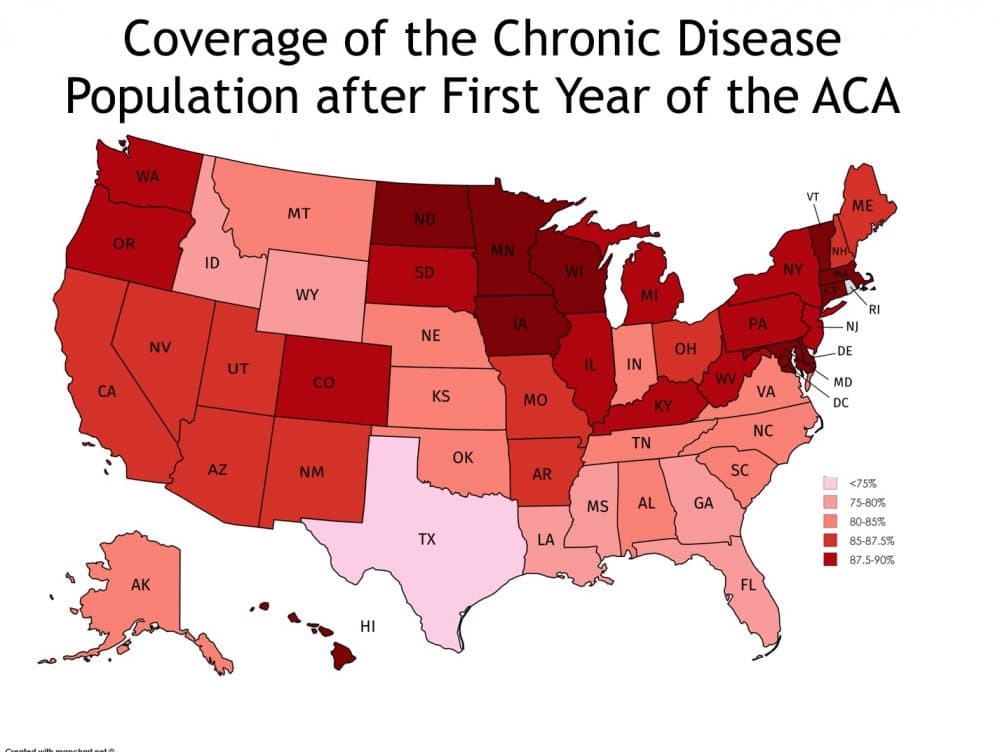Advertisement
Opinion: Study Finds Obamacare First Year Brought Coverage To 4 Million Sickest, Now At Risk

COMMENTARY
My friend, Ms. C., had worked as a city bus driver for nearly 25 years when she lost her job in 2012. Nearing 60, she couldn’t find another, and her insurance coverage lapsed. Without insurance, she could no longer see her doctor or take her blood pressure medications. She wound up in the emergency room with dangerously high blood pressure and chest pain.
Fortunately for her, she was able to get insurance under the Affordable Care Act, and get her blood pressure under control. She is in good company: As my colleagues and I found in a new study published in the Annals of Internal Medicine, she is one of 4 million American adults with chronic diseases who gained coverage under the ACA in its first year.
As physicians at a safety net hospital, we hear these kinds of stories all the time from our patients — people who, because they cannot get insurance, have gone years without the care they need to prevent disability, death and suffering.
Other studies have found that millions gained coverage under the ACA. We wanted to know what the impact was on the sickest Americans. We also wanted to know how far we would have to go to achieve universal coverage for people who cannot afford to go without it.
Our paper, which looks at a nationally representative survey of over 400,000 people across the country, found that 4.9 percent of Americans ages 18 to 64 with a chronic disease, or about 4 million, gained insurance coverage in the first year of the Affordable Care Act.
There was wide variability among states, with Massachusetts insuring 95 percent of those with chronic disease, and Texas insuring less than 75 percent of its chronic disease population. States that expanded Medicaid saw a 35 percent greater improvement in coverage than states that did not.
Despite those gains, about 12 million Americans with a chronic disease still did not have insurance after the Affordable Care Act's first year, and more faced at least one barrier to coverage.
Racial disparities also improved, but huge gaps remained: 1 in 5 blacks and 1 in 3 Hispanics with a chronic disease still lacked coverage after the first year of the Affordable Care Act, compared to 1 in 8 whites.
We only looked at the law's first year, so coverage and access probably continued to improve. The size of the remaining gaps, however, raise doubts about whether Obamacare alone could ever achieve universal coverage for the sickest Americans.
Even more alarming, the millions like Ms. C. who no longer have to rely on the emergency room for their care may now lose their coverage. Current Republican proposals to scale back Medicaid expansions or limit protections for pre-existing conditions would certainly lead to less access for those with diabetes, heart disease, cancer and other serious illnesses.
As of this writing, the Trump administration has signaled that it will repeal the Affordable Care Act. If repeal becomes reality, we expect most of the law's coverage gains to be lost. That will mean no health insurance and no regular access to health care for millions of Americans with chronic disease. Some researchers estimate that could lead to more than 40,000 deaths a year.
As a doctor, these people are not hypothetical to me. They are my friend, Ms. C: If she has insurance, she’ll thrive, with her blood pressure managed and her heart condition monitored. If she loses her insurance, she will end up back in the emergency room in danger of losing her life.
Nicole Mushero is a second-year resident at Cambridge Health Alliance planning to go into geriatrics.